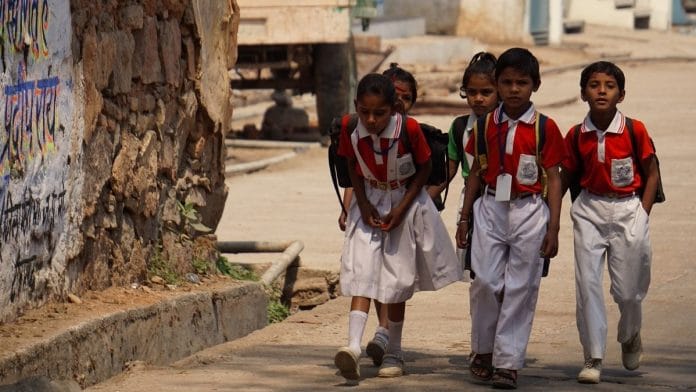New Delhi: Students between Grades 2 and 8 in 22 Indian states struggled to learn in the Covid years, with Math and English being the prominent casualties, a survey has found.
The study by social organisation Smile Foundation – and carried out between May and July 2022 – noted that over 50 percent of students in these grades were unable to keep up and exhibited severe learning deficiencies.
Students identified for the survey were those who continued learning in spite of all odds due to Covid-19. Five percent of them, or 2,464, were studied out of the 48,000 students registered with the foundation who were in Grades 2 to 8.
Hundred teachers, 10 non-government organisation leaders and 500 parents also participated in the survey.
The survey learnt that 51 percent of Grade 2 students could not recognise small and capital letters, punctuation marks, or make basic sentences. Fifty-two percent were not able to understand the subject text and write without any hesitation and 51 percent were not well versed with age-appropriate familiar words.
In Mathematics, 51 percent of Grade 2 students could not do basic addition, subtraction, multiplication, and division. Fifty-two per cent could not do basic counting of numbers and place values and sixty one percent could not work with basic geometric shapes.
In Grade 3, sixty three percent did not know how to make sentences, sixty four percent failed to display the basic stock of words or tell their meaning by listening to pronunciation.
In Grade 4 Mathematics, fifty two percent did not have knowledge of place value, numeric addition, subtraction, multiplication, and division.
Sixty-nine percent of parents thought children needed more support in Math and English to cope with age-appropriate learning levels.
Co-founder of Smile Foundation, Santanu Mishra, said, “Students have been one of the worst affected groups from the pandemic. They have struggled to adapt to different modes of learning because of which there have been gaps in the learning process. This is especially true in the rural areas of the country. Our report ‘Learning Loss and Education Recovery’ brings to light the findings and way forward to address learning loss of school-going children post Covid-19 across the operational locations of Smile Foundation. Such reports inform our social outreach strategy by identifying specific need gaps.”
Also read: ‘No show by officials, software not installed’: Centres hit by CUET cancellation blame NTA
Parents got more invested after Covid
The survey found that parents have started getting more involved after Covid. Forty-seven percent said there was an increased interaction between them and teachers, physically and over calls. Thirty-eight percent started interacting with teachers by visiting schools, and there was a 27 percent increase in attendance in Parent Teacher Meetings.
Half the parents interviewed felt the lack of digital resources – devices, networks, data packs — made the learning experience inadequate during the pandemic. Sixty-seven percent of parents said the learning was not effective after schools closed due to the pandemic.
Smile Foundation directly benefits over 15 lakh children and their families every year. The organization has more than 400 live welfare projects on education, healthcare, livelihood, and women’s empowerment in over 2,000 remote villages and urban slums across 25 states in India.
Also read: UP tops list of states with most faculty vacancies in centrally-run institutes






